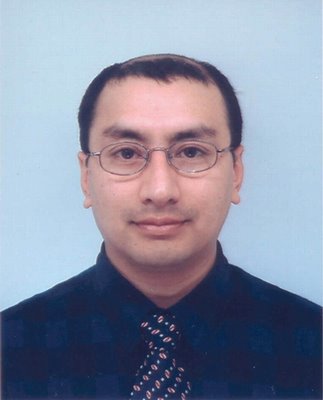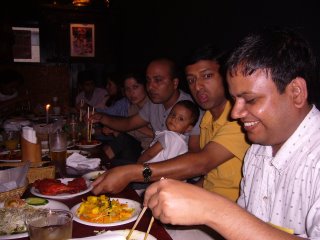
(in center)
Govinda Rizal
Nepal add: Sundhara , Kathmandu,
Kyoto University entry: April 2005
Graduation date : March 2007 (Master), March 2010, Ph. D expected)
Degree : Masters Agriculture, (Plant Breeding)
Ph. D (expected by 2010 March)
Research area:
Ph. D.: Genetic control of proanthocyanidin and racal scavenging activites in soybean.
Masters: Improvement of Protein Quality in Soybean Through Gene Modification
Current Add: Kyoto Fu, Uji shi, Asakura, 50-1 NishiOkubo 22-205 (PC: 611-0033) Tel: 080 3812 9610
Email:
govindarizal@gmail.com
Credits:
http://rizag.blogspot.com/
Home Page:
http://govindarizal.googlepages.com/
Editor and Academic program coordinator (2008-2009): Kyoto University, Organizing Committee for 10th Association for Pacific Rim Universities – Doctoral Students conference.
http://www.opir.kyoto-u.ac.jp/apru_dsc/index.html
Presentations
Kinki Crop Science Symposium, July 11, 2009, Kyoto University.
Japanese Society of Breeding, Annual Meeting, 2009, Tsukuba Japan, and Annual Meeting, 2008, Shiga, Japan.
The XVIIIth International Roundtable on Nucleoside, Nucleotides and Nucleic Acids, September 8- 11, 2008, Kyoto, Japan.
International Conference on Food Factors for Health Promotion (ICoFF2007), Nov 28-31, 2007, Kyoto International Conference Center, Kyoto, Japan.
The 3rd International Conference on Polyphenols and Health (ICPH 2007), November 25-28, 2007, Kyoto International Conference Center, Kyoto, Japan.
Plant Breeding Seminar, Yamagata, 2007
The 5th International Symposium of Rice Functional Genomics, October 15-17, 2007 at Epochal Tsukuba International Congress center, Tsukuba, Japan.
The 46th Gamma Field Symposium, 2007, Mito, Japan.
The 9th Kyoto University International Symposium: Integrating Global Environmental Studies towards
Human Security, June 22-23, 2007, Kyoto University, Kyoto, Japan
International Symposium on Pine Wilt Disease in Asia, Kyoto University, 15-17 February 2007, Kyoto Japan
United Nations University, seminar series on peace, Hokkaido, 2005
International Convention on Quality Control Management, Participatory Rural Appraisal (PRA)Training
Various seminars, symposiums and conferences related to Agriculture





















